Baking trials: What's the best way to chop chocolate?
A common kitchen tool makes all the difference.
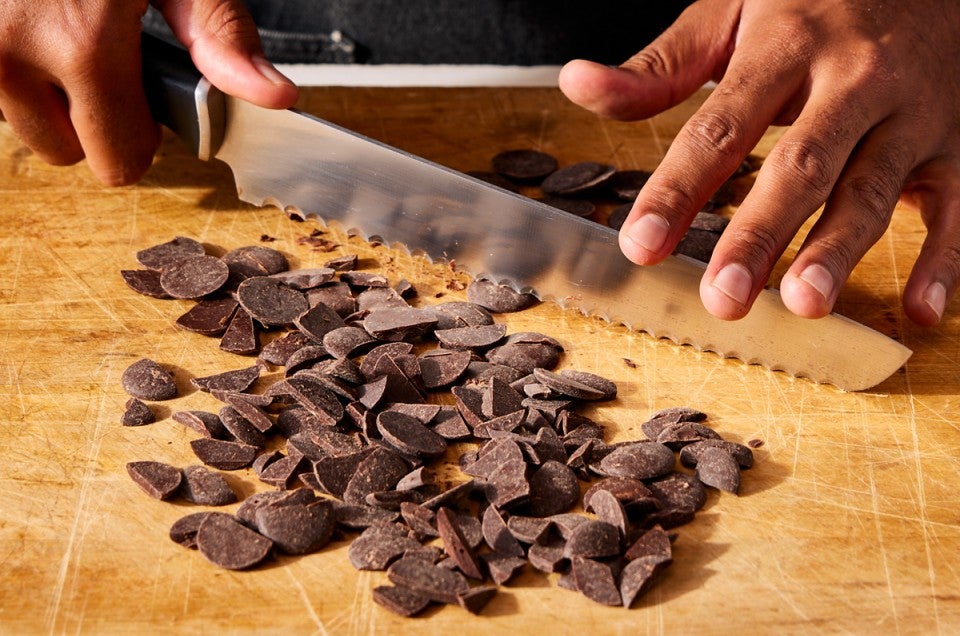

When you’re skimming a recipe — perhaps chocolate chip cookies — and see that it calls for you to “chop chocolate,” what’s your first impulse? Let me guess: You’re reaching for that handy bag of chocolate chips.
But not so fast: Recipe developers don’t call for chopped chocolate instead of chips just to make our lives difficult. There’s actually quite a baking difference between chocolate you chop yourself, and the ubiquitous chocolate chip.
Molly Marzalek-Kelly, King Arthur’s Senior Recipe Developer, explains why chopped chocolate can be a superior choice to chips. When you choose solid chocolate, with its wide range of cacao percentage and sweetness, “You have flexibility in the balance of semisweet versus bittersweet versus milk chocolate you use, so there are more ways to mix and match to your specific taste,” she says. “Also, solid chocolate is often higher-quality chocolate. And it usually doesn’t contain the stabilizers found in chocolate chips that help keep them from melting, resulting in better performance in your baked goods.”
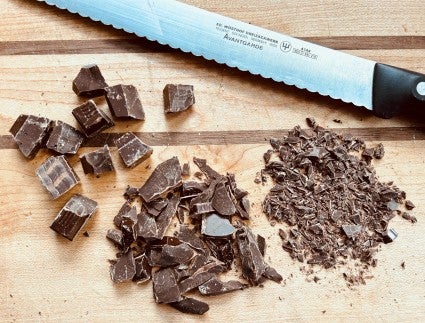
In addition, chocolate that’s hand-chopped can provide a better eating experience, since you control the pieces’ final size. Instead of a cookie with an array of same-size chips, you can bake one in which the chocolate ranges from small flecks peppering the entire cookie to shards that create delicious gooey puddles, offering a diverse chocolate experience in every bite. That’s why you should chop your own chocolate.
For such a straightforward task, chopping chocolate can be a pain. It’s messy (who likes shards of chocolate flying everywhere?) and can be frustrating, as solid chocolate is often difficult to cut.
After chopping chocolate using five different tools and methods — a serrated knife, whacking with a heavy rolling pin, chef’s knife, bench knife, and a food processor — Molly and I both reached the same conclusion: a serrated knife is your best bet.
In our co-rankings, the serrated knife was a perfect 10/10, followed by a rolling pin (7/10); a chef’s knife (5/10); food processor (4/10); and bench knife (3/10).
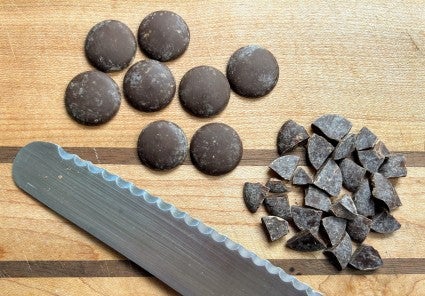
Wait, a serrated knife? You’re going to saw through that chocolate bar or chocolate wafers? Not at all. Perhaps counterintuitively, a serrated knife doesn’t need to be sawed back and forth to chop chocolate. Instead, the gentle downward pressure you provide moves it through solid chocolate like a table knife through butter, allowing you much more control of the ultimate size of the pieces. The result is a clean cut with little crumbling, and pieces that are the exact size you want.
In addition, the knife’s serrations act like tiny little hands as you cut, “cupping” the chocolate just a bit so it’s much less likely to skitter around your cutting board (or onto the floor).
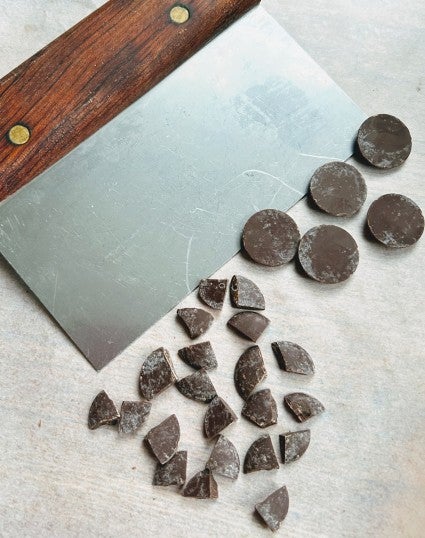
While the rolling pin and food processor would seem the quickest methods, they also generate a large amount of “chocolate dust”— pieces of chocolate so small they disappear when baked. Meanwhile, both the chef’s knife and bench knife tend to send random bits of chocolate “jumping around” on the cutting surface, unlike the serrated knife.
And while the bench knife was ineffective in most uses, I found it very handy for one application: chopping wafers into even quarters, one by one. Lay each wafer on its convex back, press the knife down across the equator, and the wafer will break into four exact pieces. This is an excellent way to involve children in your baking prep, as the bench knife is a safer tool for them than a knife.
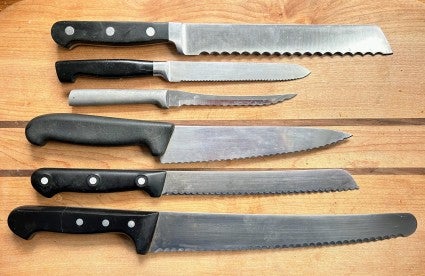
Choose the weightiest serrated knife you can find: the sturdier the knife, the less elbow grease you’ll need. And though the difference is slight, medium serrations seem to work better than small or large ones. Our favorite tool is a medium-serration bread knife.
After chopping loads of chocolate for this article, here’s a hint: Grip your serrated knife far up on its handle, close to the tang (blade). Keeping the edge of the handle anchored on the cutting surface (for best control), use a rocking motion to chop. Now this won’t work if you’re chopping a very thick chocolate bar (think Trader Joe’s mega-bars), but for wafers, discs, or thinner break-apart bars, a controlled rock is the way to go.
Chopped chocolate is usually seen as an ingredient in cookies, but it’s also the common first step in producing super-shiny chocolate for coating and candy. See our Basic Guide to Tempering Chocolate for the techniques and tips you need to pull off this potentially tricky task.
Cover photo by Rick Holbrook; food styling by Kaitlin Wayne.

